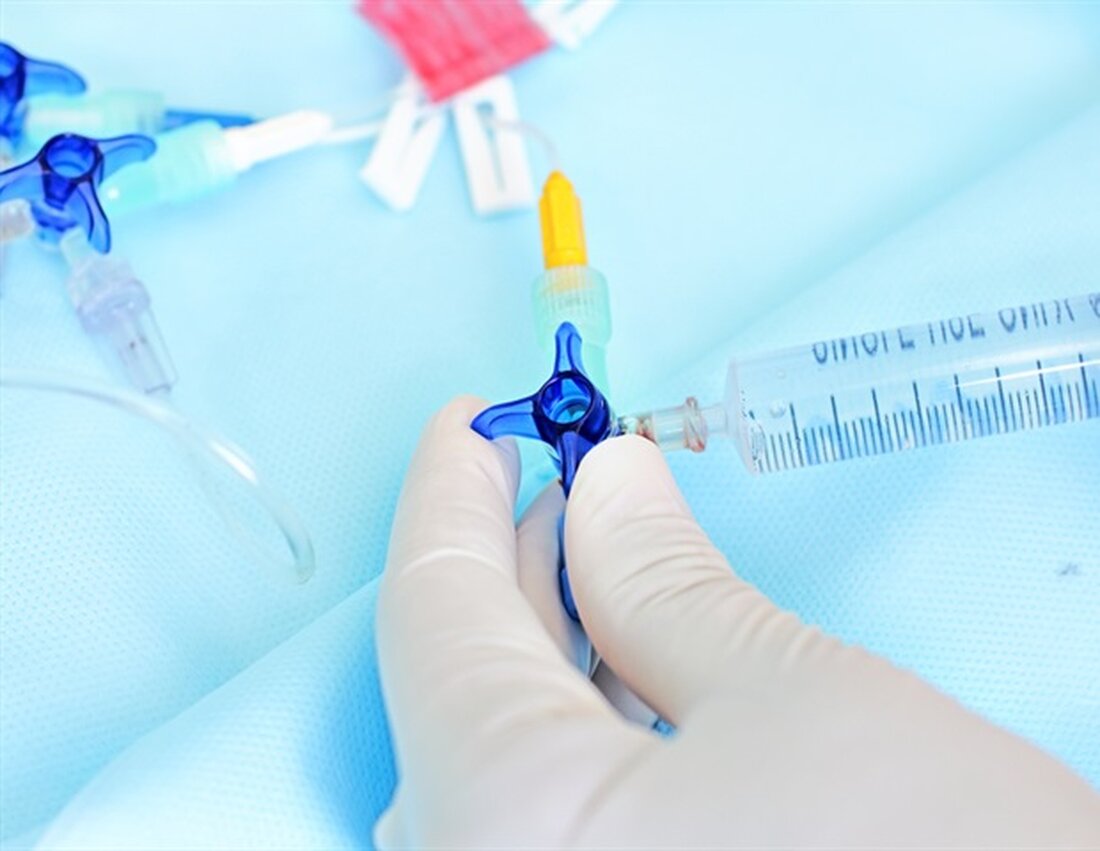Subcutaneous anchor retention systems are proving effective in keeping central catheters in place
A new study on central vascular access device (CVAD) fixation suggests that subcutaneous anchor fixation systems (SASS) are proven to be more effective at holding central catheters in place compared to either suture-based or adhesive device-based fixation methods at Eloquest Healthcare, Inc., a privately held company Medical device companies. Catheter migration and dislocation have an enormous impact on patient outcomes as well as healthcare costs, and "evidence suggests that subcutaneous anchor systems are superior to other engineered or improvised securing systems in reducing catheter migration," said lead author Jon Bell, MSN, RN, VA-BC. The review article published in…

Subcutaneous anchor retention systems are proving effective in keeping central catheters in place
A new study on central vascular access device (CVAD) fixation suggests that subcutaneous anchor fixation systems (SASS) are proven to be more effective at holding central catheters in place compared to either suture-based or adhesive device-based fixation methods at Eloquest Healthcare, Inc., a privately held company Medical device companies.
Catheter migration and dislocation have an enormous impact on patient outcomes as well as healthcare costs, and "evidence suggests that subcutaneous anchor systems are superior to other engineered or improvised securing systems in reducing catheter migration," said lead author Jon Bell, MSN, RN, VA-BC.
The review article, published in the Fall 2022 issue of the Journal of the Association for Vascular Access, will also be the subject of an exhibitor theater presentation given by co-author Michelle Hawes, DNP, RN, CRNI, VA-BC at the upcoming Association for Vascular Access Scientific Meeting.
A pressing problem in vascular access
CVADs are essential to patient care, and each month clinicians insert thousands of central venous catheters (CVCs) and peripherally inserted central catheters (PICCs) into patients. Still, there is little conclusive evidence from randomized clinical trials or other studies about which attachment methods work best to prevent catheters from becoming dislodged or moving or to reduce bloodstream infections.
This has contributed to "a standard of care that is fragile and confusing and has created a real need to gather evidence on the best safety practice," Bell said.
Currently, most CVCs are secured using suture-based systems, while the majority of PICCs are secured using combinations of dressings and adhesive fasteners. Interrad Medical's SecurAcath® is the world's only subcutaneous anchor fixation system that can be used for both catheter types.
The data show clear advantages of the subcutaneous anchor fixation system
Researchers conducted a systematic review of more than 8,000 studies to examine safety and effectiveness outcomes associated with CVAD securing. In the studies with good comparative data on catheter migration and dislocation rates, researchers found clear advantages for the subcutaneous anchor fixation system.
The median incidence of migration and dislocation was only 1.76 percent for SASS, compared to 4.17 percent for integrated devices (dressing with integrated fastening technology), 6.77 percent for suture-based systems, and 9.69 percent for adhesive fastening devices.
The data did not provide clear conclusions about which method is best for reducing central line associated bloodstream infections (CLABSI), and further research is needed to examine the true impact of safeguarding on patient outcomes. However, Bell suggests that “given the current evidence, subcutaneous anchor fixation systems are likely to be the future of CVAD fixation.”
Evidence for SecurAcath is accumulating
The new review adds to the evidence supporting the use of SecurAcath, the only subcutaneous anchor securing system currently available. As Michelle Hawes will describe in her AVA presentation, a 2020 study showed that SecurAcath also significantly reduced the risk of bloodstream infections compared to adhesive attachment methods for PICCs.
Additionally, a retrospective study found that a single catheter secured with SecurAcath lasted the entire duration of need in 98 percent of cases. In contrast, 20 percent of catheters secured with adhesive fasteners required replacement. Despite higher upfront costs with SecurAcath, the improved outcomes and simplified care and maintenance will result in lower overall healthcare costs, explains Hawes.
AVA's annual scientific meeting will be held September 30-October 3 in Minneapolis, Minnesota. Hawes' lecture will take place on October 1, 2022 at 12:30 p.m. CT in Exhibit Hall C of the Minneapolis Conference Center. Learn more about CVAD security with SecurAcath at AVA, visit Eloquest Healthcare at booth #612.
Source:
Reference:
Bell, JA, et al. (2022) Systematic review of the safety and effectiveness of securing central vascular access devices. Journal of the Association for Vascular Access. doi.org/10.2309/JAVA-D-22-00013.
.

 Suche
Suche
 Mein Konto
Mein Konto
